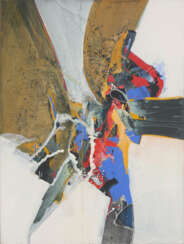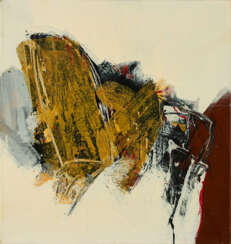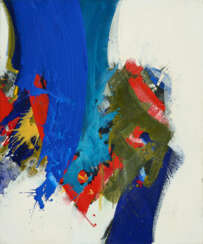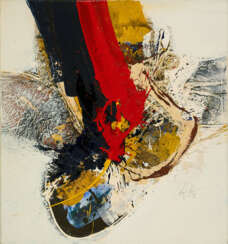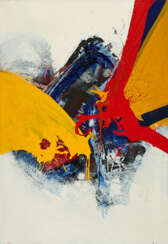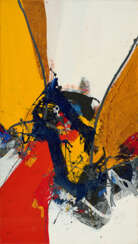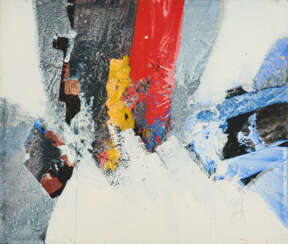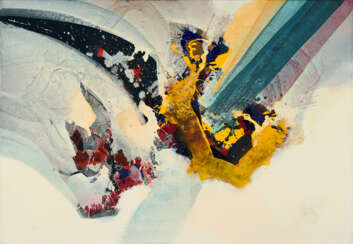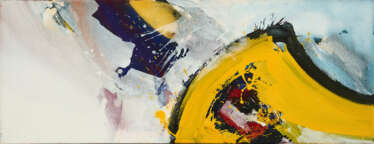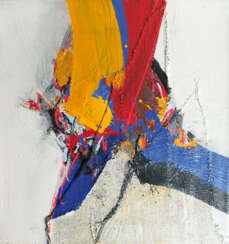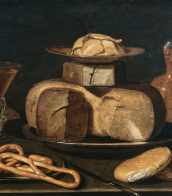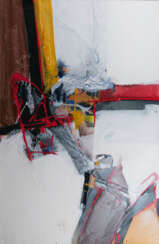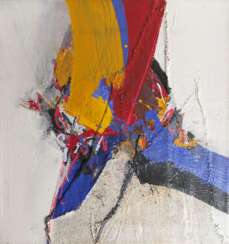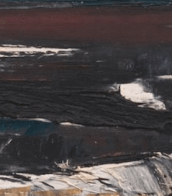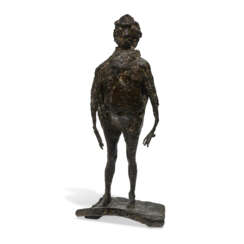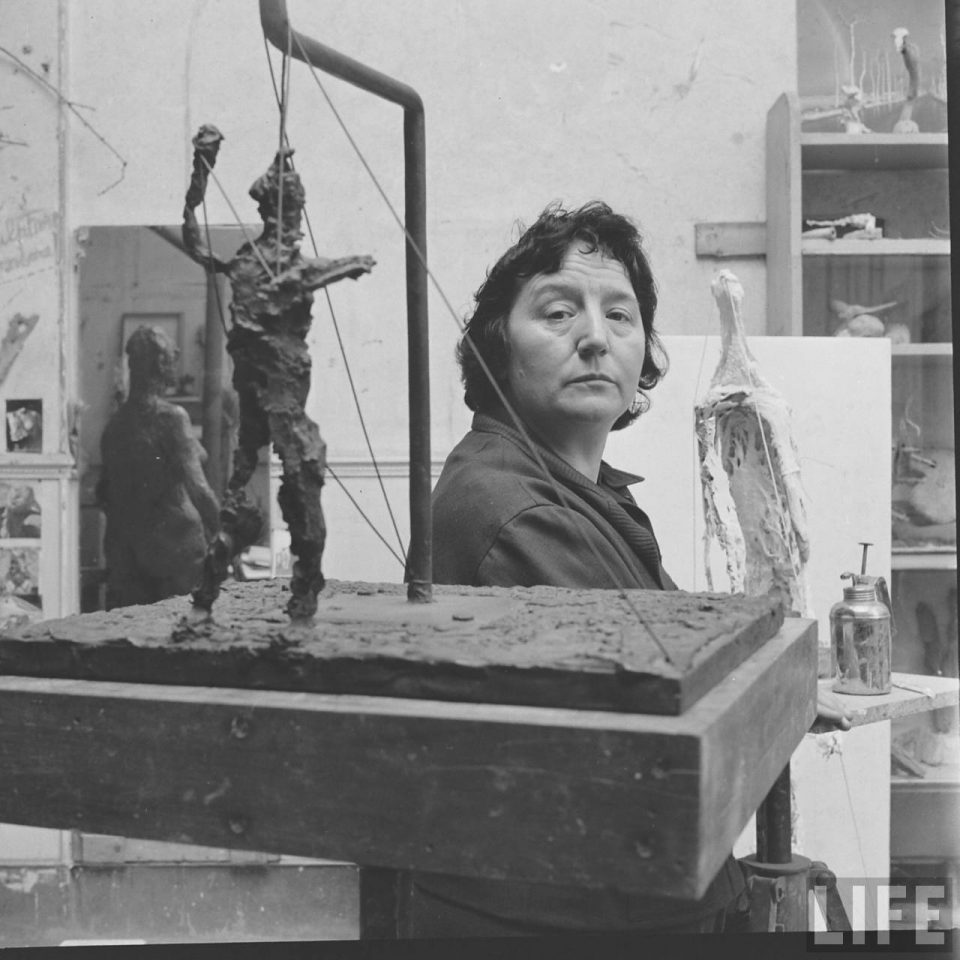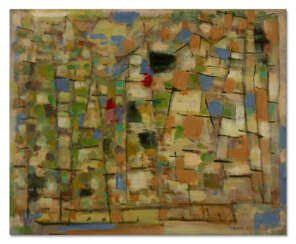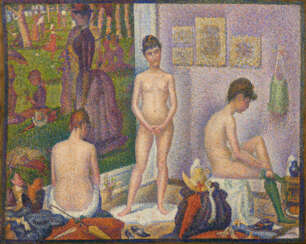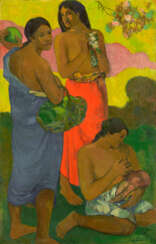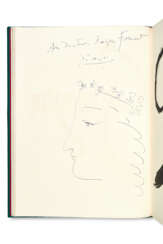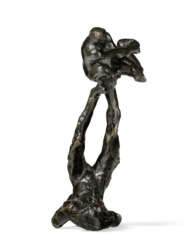roger greßl (1959)
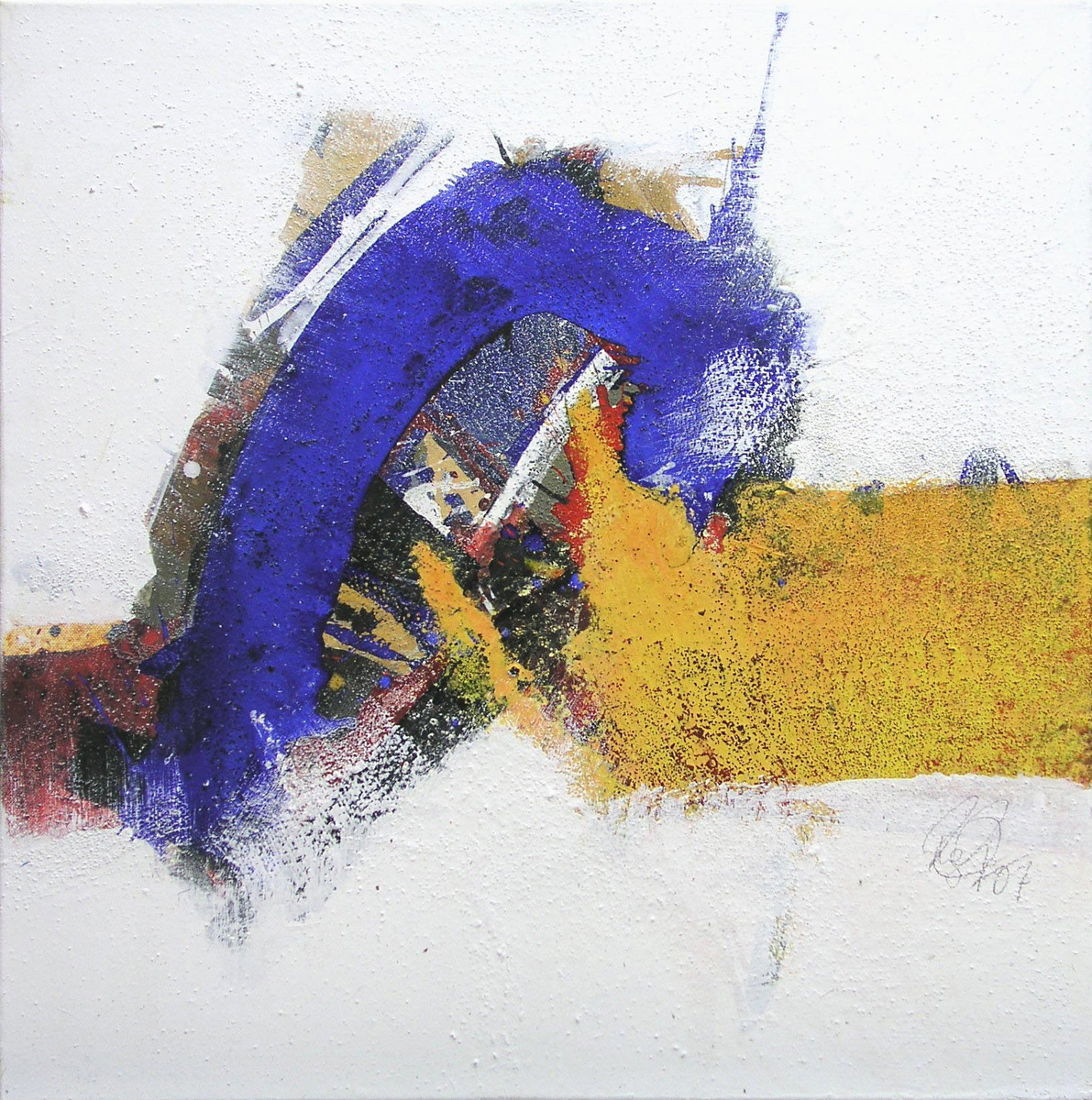
Roger Gressl is a contemporary Austrian painter. His overpaintings are well known. Gressl has been working as a freelance painter and graphic artist since 1987. His works have been shown in numerous solo exhibitions in Berlin, Krems, St. Pölten, Innsbruck, Vienna, Frankfurt, Heidelberg, Mannheim, Feldkirch, Bergamo, Wels and London. Since 1988 he has been regularly represented at international art fairs in Basel, Barcelona, Frankfurt, Florence, Ghent, Los Angeles and Nuremberg. Gressl's recognizability lies in the consistent use and treatment of his color combinations and the acrylic mixing technique used. The artist tries to achieve an effect through complementary colours, to form axes and knows how to create a closed, harmonious color composition based on aggressive colors using shades of gray and white.
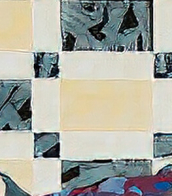

Roger Gressl is a contemporary Austrian painter. His overpaintings are well known. Gressl has been working as a freelance painter and graphic artist since 1987. His works have been shown in numerous solo exhibitions in Berlin, Krems, St. Pölten, Innsbruck, Vienna, Frankfurt, Heidelberg, Mannheim, Feldkirch, Bergamo, Wels and London. Since 1988 he has been regularly represented at international art fairs in Basel, Barcelona, Frankfurt, Florence, Ghent, Los Angeles and Nuremberg. Gressl's recognizability lies in the consistent use and treatment of his color combinations and the acrylic mixing technique used. The artist tries to achieve an effect through complementary colours, to form axes and knows how to create a closed, harmonious color composition based on aggressive colors using shades of gray and white.
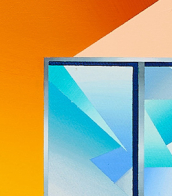

Roger Gressl is a contemporary Austrian painter. His overpaintings are well known. Gressl has been working as a freelance painter and graphic artist since 1987. His works have been shown in numerous solo exhibitions in Berlin, Krems, St. Pölten, Innsbruck, Vienna, Frankfurt, Heidelberg, Mannheim, Feldkirch, Bergamo, Wels and London. Since 1988 he has been regularly represented at international art fairs in Basel, Barcelona, Frankfurt, Florence, Ghent, Los Angeles and Nuremberg. Gressl's recognizability lies in the consistent use and treatment of his color combinations and the acrylic mixing technique used. The artist tries to achieve an effect through complementary colours, to form axes and knows how to create a closed, harmonious color composition based on aggressive colors using shades of gray and white.


Roger Gressl is a contemporary Austrian painter. His overpaintings are well known. Gressl has been working as a freelance painter and graphic artist since 1987. His works have been shown in numerous solo exhibitions in Berlin, Krems, St. Pölten, Innsbruck, Vienna, Frankfurt, Heidelberg, Mannheim, Feldkirch, Bergamo, Wels and London. Since 1988 he has been regularly represented at international art fairs in Basel, Barcelona, Frankfurt, Florence, Ghent, Los Angeles and Nuremberg. Gressl's recognizability lies in the consistent use and treatment of his color combinations and the acrylic mixing technique used. The artist tries to achieve an effect through complementary colours, to form axes and knows how to create a closed, harmonious color composition based on aggressive colors using shades of gray and white.


Roger Gressl is a contemporary Austrian painter. His overpaintings are well known. Gressl has been working as a freelance painter and graphic artist since 1987. His works have been shown in numerous solo exhibitions in Berlin, Krems, St. Pölten, Innsbruck, Vienna, Frankfurt, Heidelberg, Mannheim, Feldkirch, Bergamo, Wels and London. Since 1988 he has been regularly represented at international art fairs in Basel, Barcelona, Frankfurt, Florence, Ghent, Los Angeles and Nuremberg. Gressl's recognizability lies in the consistent use and treatment of his color combinations and the acrylic mixing technique used. The artist tries to achieve an effect through complementary colours, to form axes and knows how to create a closed, harmonious color composition based on aggressive colors using shades of gray and white.
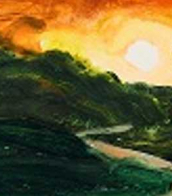

Roger Gressl is a contemporary Austrian painter. His overpaintings are well known. Gressl has been working as a freelance painter and graphic artist since 1987. His works have been shown in numerous solo exhibitions in Berlin, Krems, St. Pölten, Innsbruck, Vienna, Frankfurt, Heidelberg, Mannheim, Feldkirch, Bergamo, Wels and London. Since 1988 he has been regularly represented at international art fairs in Basel, Barcelona, Frankfurt, Florence, Ghent, Los Angeles and Nuremberg. Gressl's recognizability lies in the consistent use and treatment of his color combinations and the acrylic mixing technique used. The artist tries to achieve an effect through complementary colours, to form axes and knows how to create a closed, harmonious color composition based on aggressive colors using shades of gray and white.


Roger Gressl is a contemporary Austrian painter. His overpaintings are well known. Gressl has been working as a freelance painter and graphic artist since 1987. His works have been shown in numerous solo exhibitions in Berlin, Krems, St. Pölten, Innsbruck, Vienna, Frankfurt, Heidelberg, Mannheim, Feldkirch, Bergamo, Wels and London. Since 1988 he has been regularly represented at international art fairs in Basel, Barcelona, Frankfurt, Florence, Ghent, Los Angeles and Nuremberg. Gressl's recognizability lies in the consistent use and treatment of his color combinations and the acrylic mixing technique used. The artist tries to achieve an effect through complementary colours, to form axes and knows how to create a closed, harmonious color composition based on aggressive colors using shades of gray and white.


Roger Gressl is a contemporary Austrian painter. His overpaintings are well known. Gressl has been working as a freelance painter and graphic artist since 1987. His works have been shown in numerous solo exhibitions in Berlin, Krems, St. Pölten, Innsbruck, Vienna, Frankfurt, Heidelberg, Mannheim, Feldkirch, Bergamo, Wels and London. Since 1988 he has been regularly represented at international art fairs in Basel, Barcelona, Frankfurt, Florence, Ghent, Los Angeles and Nuremberg. Gressl's recognizability lies in the consistent use and treatment of his color combinations and the acrylic mixing technique used. The artist tries to achieve an effect through complementary colours, to form axes and knows how to create a closed, harmonious color composition based on aggressive colors using shades of gray and white.


Roger Gressl is a contemporary Austrian painter. His overpaintings are well known. Gressl has been working as a freelance painter and graphic artist since 1987. His works have been shown in numerous solo exhibitions in Berlin, Krems, St. Pölten, Innsbruck, Vienna, Frankfurt, Heidelberg, Mannheim, Feldkirch, Bergamo, Wels and London. Since 1988 he has been regularly represented at international art fairs in Basel, Barcelona, Frankfurt, Florence, Ghent, Los Angeles and Nuremberg. Gressl's recognizability lies in the consistent use and treatment of his color combinations and the acrylic mixing technique used. The artist tries to achieve an effect through complementary colours, to form axes and knows how to create a closed, harmonious color composition based on aggressive colors using shades of gray and white.

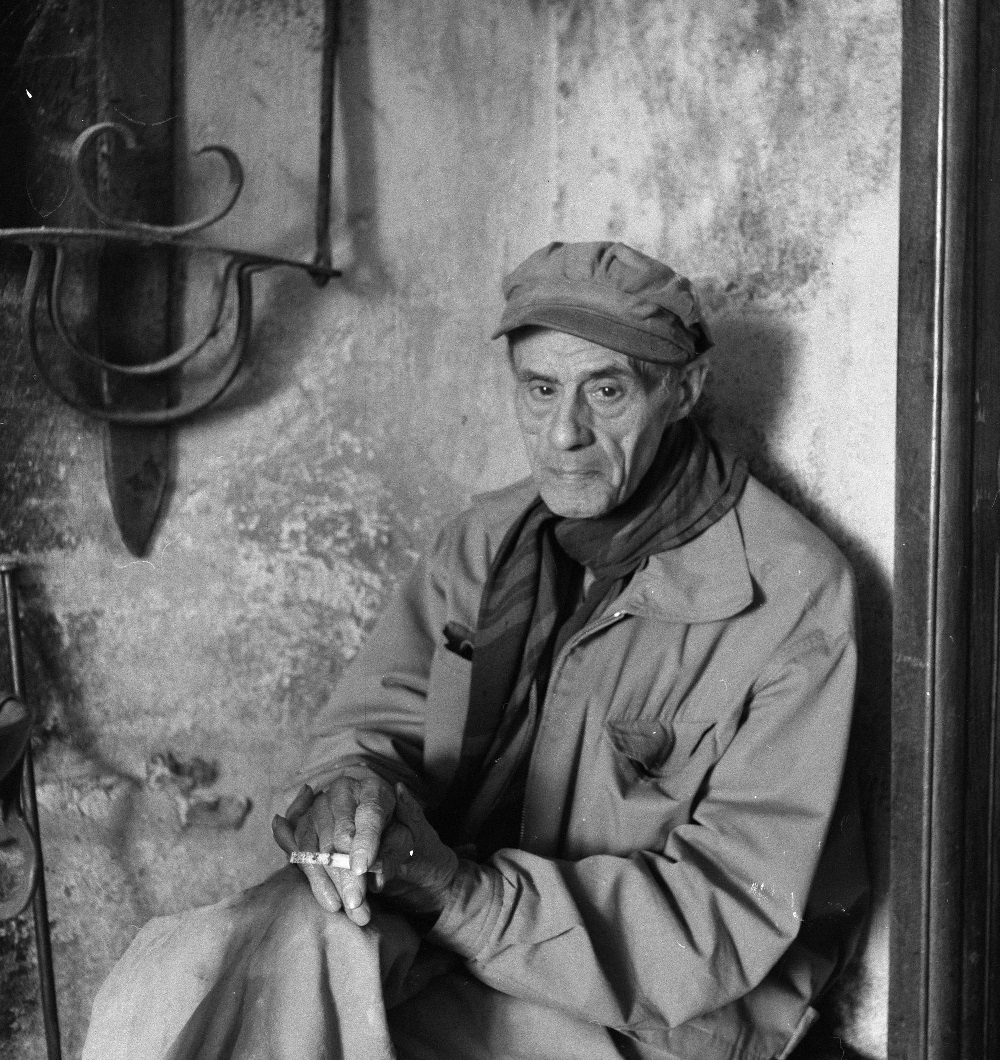
Roger Bissière was a French artist. He designed stained glass windows for Metz cathedral and several other churches.

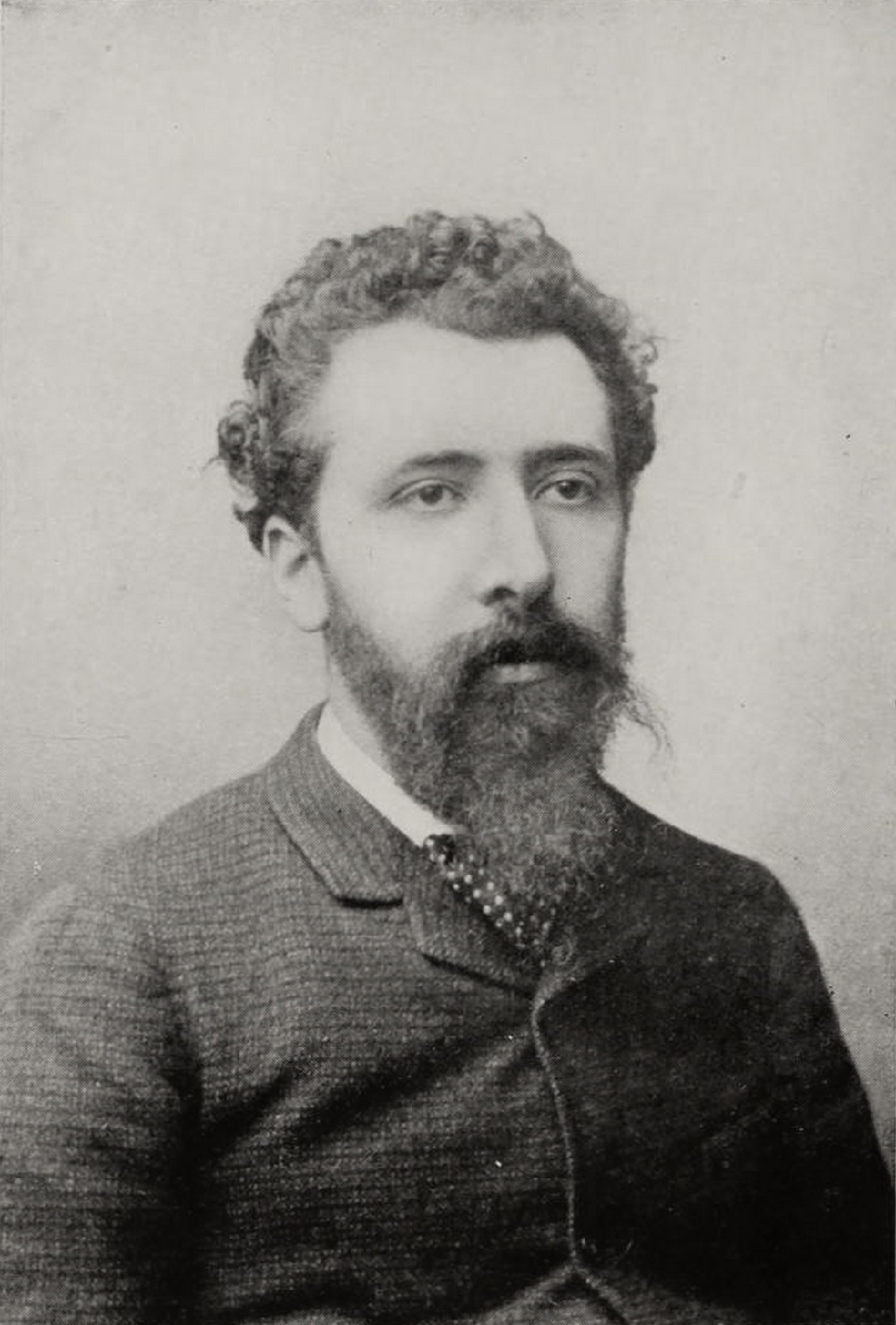
Georges Seurat was a French painter, renowned as the founder of the 19th-century French school of Neo-Impressionism. His groundbreaking technique, Pointillism, involved the use of tiny, contrasting color brushstrokes that, when viewed together, created a luminous quality in his compositions. Seurat's life was a blend of rigorous academic training and innovative artistic exploration.
Born on December 2, 1859, in Paris, Seurat demonstrated an early interest in art. He received formal training at the École des Beaux-Arts under Henri Lehmann, a disciple of the Neo-Classical painter Ingres, where he honed his skills in drawing and composition. Seurat was deeply influenced by color theories and the science of optics, which became central to his artistic approach. He was particularly inspired by the work of Michel-Eugène Chevreul and Ogden N. Rood, whose writings on color contrast and harmony greatly influenced his painting technique.
One of Seurat's most famous works, "A Sunday Afternoon on the Island of La Grande Jatte" (1884–1886), showcased his Pointillism technique. This painting, now housed in the Art Institute of Chicago, portrays members of different social classes engaged in various activities in a park setting. The work is notable for its use of small, juxtaposed dots of multi-colored paint, which allow the viewer's eye to blend colors optically. This technique was a significant departure from the traditional methods of color mixing on the canvas.
Another notable work by Seurat is "Bathers at Asnières" (1884), displayed at the National Gallery in London. This large canvas depicts young men relaxing by the Seine in a working-class suburb of Paris. The painting reflects Seurat's neoclassical training, with its smooth, simplified textures and carefully outlined figures.
Seurat's final painting, "The Circus" (1890-91), represents a shift to a more dynamic representation of movement and is typical of his late style. Unfortunately, Seurat's life was cut short when he died suddenly in March 1891, leaving "The Circus" unfinished. This painting is now part of the collection at the Musée d'Orsay in Paris.
Seurat's innovative techniques and his exploration of color theory and optics had a lasting impact on the art world, influencing subsequent generations of artists. His work remains a testament to the fusion of scientific principles with artistic expression, making him a pivotal figure in the transition from Impressionism to Post-Impressionism and modern art.
For those captivated by the genius of Georges Seurat and his revolutionary art, there's an exclusive opportunity waiting for you. By signing up for our updates, you'll be the first to know about new product sales and auction events related to Seurat's works and legacy. This subscription is tailored for enthusiasts, collectors, and experts in the field of art and antiques, ensuring you receive only the most relevant and curated information. Don't miss out on the chance to enhance your collection and deepen your understanding of Seurat's impact on the art world. Sign up now and stay ahead in the world of fine art and antiques.


Paul Gauguin, a French artist born in Paris in 1848, is renowned for his significant contributions to Post-Impressionism, Primitivism, and Synthetism. Gauguin's art is distinguished by his experimental use of color and style, which set him apart from the traditional Impressionist movement.
Gauguin's early life was marked by a period in Peru, which influenced his artistic perspective. Initially, he pursued a career in stockbroking but soon turned to art, driven by financial necessity and a growing passion. His artistic journey began under the mentorship of Impressionist artist Camille Pissarro and through exposure to the works of other avant-garde artists.
The hallmark of Gauguin's work is his exploration of non-Western cultures, particularly during his time in Tahiti and the Marquesas Islands. This period saw the creation of some of his most famous works, including "Where Do We Come From? What Are We? Where Are We Going?" His paintings from this era, characterized by vivid colors and Symbolist themes, reflect a fusion of cultural influences and his quest for a "primitive" expression of spiritual and emotional states.
Despite his innovative style, Gauguin struggled with financial difficulties and health issues throughout his life. His work received little recognition during his lifetime, but posthumously, he gained acclaim for influencing modern artists like Pablo Picasso and Henri Matisse.
Today, Gauguin's works are celebrated in galleries and museums worldwide for their unique blend of cultural influences and artistic innovation. His enduring legacy is a testament to his unique vision and the profound impact he had on the art world.
Collectors and experts in art and antiques, stay updated on new product sales and auction events related to Paul Gauguin. Sign up now for exclusive updates and immerse yourself in the world of this visionary artist.


Pablo Ruiz Picasso, a Spanish artist renowned for his revolutionary contributions to the 20th-century art scene, is a figure that resonates profoundly with collectors and art experts. His unique blend of talents in painting, sculpture, printmaking, and ceramic art, infused with his time in France, positioned him as a pivotal character in modern art history.
Picasso's artistic journey was marked by distinct periods, each showcasing his evolving style and genius. His early years were characterized by the Blue Period (1901-1904), followed by the Rose Period (1904-1906), and then the African-influenced Period (1907-1909). Picasso's name is synonymous with Cubism, a movement he co-founded, which significantly altered artistic perspectives and methods. Works like "Les Demoiselles d'Avignon" (1907) and "Guernica" (1937) are emblematic of his cubist legacy, the latter being a poignant anti-war statement that remains influential.
His later years saw a return to more traditional styles, with neoclassical and surrealist influences becoming evident. Works from these phases reflect a deep engagement with mythological themes, as seen in "Faun with Stars" (1955), symbolizing his late-life romance with Jacqueline Roque, his second wife.
Picasso's prolific output and innovative spirit made him a legend in his own time, a status that only grew after his death. His works, housed in major museums and private collections worldwide, continue to captivate and inspire.
As a collector or expert in art and antiques, staying informed about Picasso's works, their auction events, and sales is essential. To stay updated on the latest developments and opportunities related to Pablo Picasso, sign up for our specialized updates. Rest assured, this subscription will focus solely on new product sales and auction events pertaining to Picasso's art, ensuring that you receive only the most relevant and valuable information.

Paul Bonet, birth name Paul Joseph Ghislain Bonet, is a French bookbinder and bookbinding designer, Knight of the Legion of Honor.
Trained to make fashionable wooden mannequins, Paul Bonet worked in the fashion industry for several years and did not turn to bookbinding until 1920. His bright, colorful designs and prolific work made him famous. His first bindings were exhibited in 1925 at the Gallière Museum, then at the French Book Arts Exhibition, the Salon d'Automne and the Salon des Artistes Décoratifs, and his talent was recognized.
His decoration was particularly innovative. One of the great masters of French bookbinding, Paul Bonet became famous in the 1930s and 1940s for one of his signature patterns, "sunbeams." These patterns consist of many small lines with gold trim, carefully planned and giving the optical illusion of spatial depth.


François Auguste René Rodin was a French sculptor, generally considered the founder of modern sculpture. He was schooled traditionally and took a craftsman-like approach to his work. Rodin possessed a unique ability to model a complex, turbulent, and deeply pocketed surface in clay. He is known for such sculptures as The Thinker, Monument to Balzac, The Kiss, The Burghers of Calais, and The Gates of Hell.
Many of Rodin's most notable sculptures were criticized, as they clashed with predominant figurative sculpture traditions in which works were decorative, formulaic, or highly thematic. Rodin's most original work departed from traditional themes of mythology and allegory. He modeled the human body with naturalism, and his sculptures celebrate individual character and physicality. Although Rodin was sensitive to the controversy surrounding his work, he refused to change his style, and his continued output brought increasing favor from the government and the artistic community.

